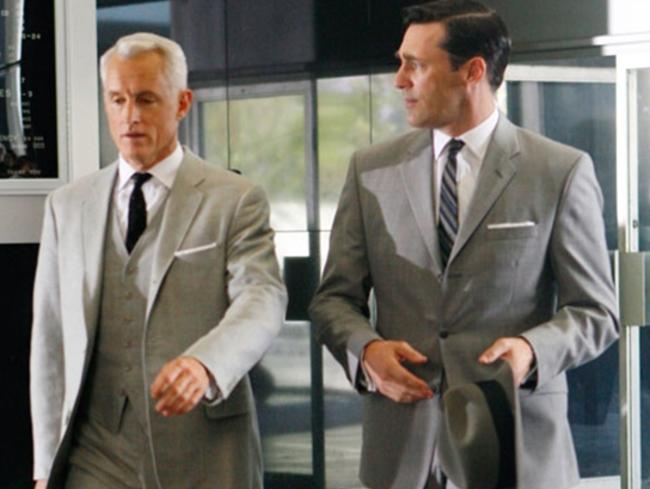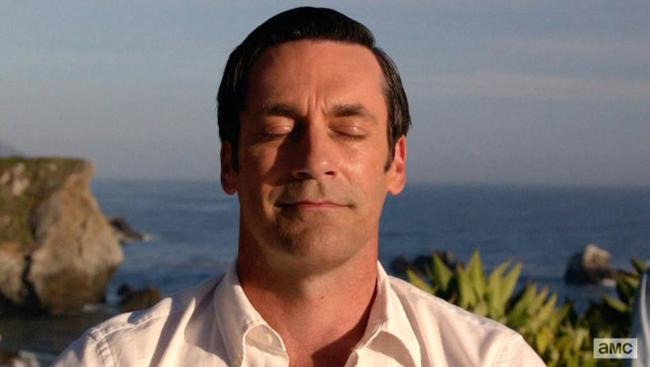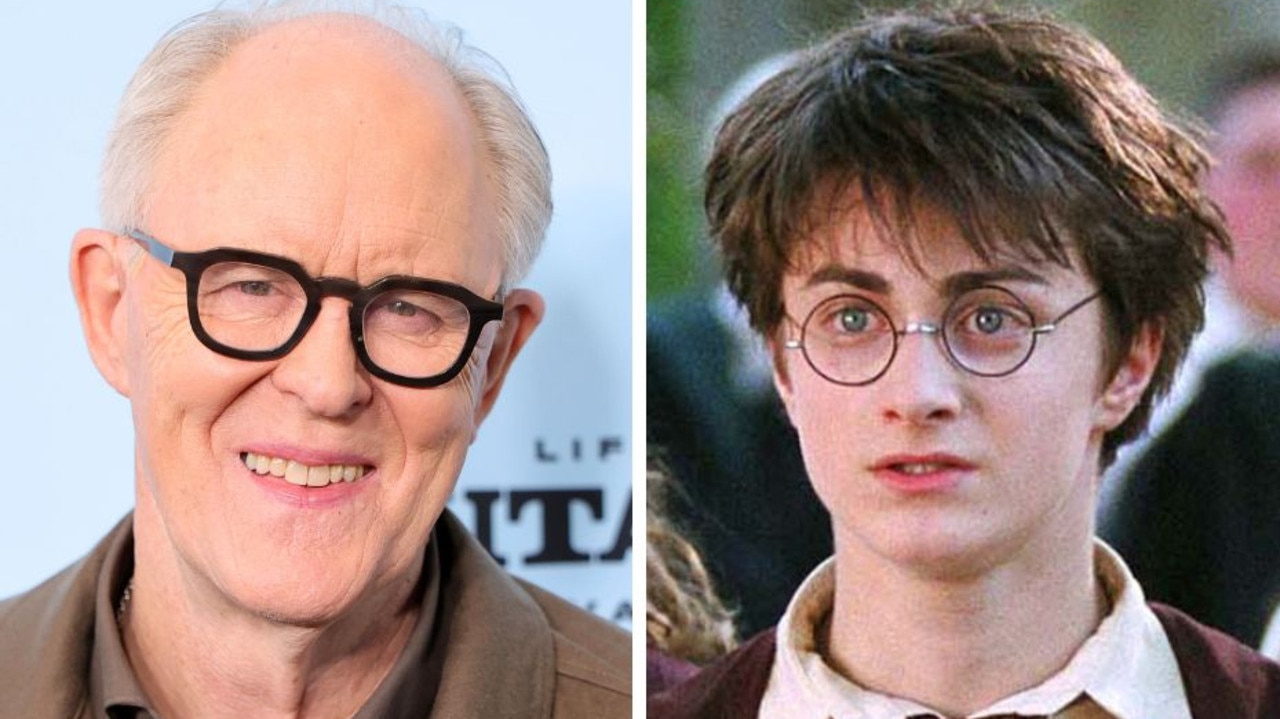The legacy of Mad Men
IF YOU love Breaking Bad, The Walking Dead or The Americans, you can thank Mad Men for that. Because without it, they may never have come to be.
GOODBYE to Don Draper, he of the brooding looks, alcoholism and tortured soul.
Goodbye to the sumptuous costumes, the music and the complex characters that enraptured us for eight years. Goodbye to a nuanced TV show that significantly influenced what we watch on TV today.
Goodbye to Mad Men.
The beautiful-to-look-at and even more beautiful-to-think-about TV show just aired its very last episode yesterday, eight years after it sashayed onto our screens in 2007.
Over seven seasons and 92 episodes, creator Matt Weiner gave eager viewers a slice of America in the 1960s and its transition from the seemingly idyllic 1950s through the social upheaval of the following decade. Mad Men referenced, through its characters, the Cuban missile crisis, the Kennedy assassination, Civil Rights and race relations, the Summer of Love, gender politics and the Vietnam War. It was a turbulent era for both the Mad Men characters and for Western history.
But more than the overflowing merits of the show, Mad Men will be remembered for its considerable influence on the so-called Golden Age of TV we’re living through. For every Duck Dynasty, Keeping Up With The Kardashians or Hardcore Pawn, we’re also gifted with The Honourable Woman, The Americans or Transparent.
Brave and cinematic TV with character-driven stories and sustained narratives needs antecedents so TV execs feel comfortable greenlighting projects that will cost loads of money to make but probably won’t bring in that many viewers. What it does bring is cultural relevance and a place in the zeitgeist.

In the US, cable subscribers pay for a basic package that would include a channel such as AMC. Traditionally, these channels haven’t invested in quality original programming such as Mad Men. Original programming was left to the likes of ratings-obsessed network TV, or premium channels such as HBO, which is an extra cost for subscribers.
Which makes AMC’s creation of Mad Men all the more remarkable.
HBO is usually credited with spearheading this Golden Age of TV with its early efforts such as The Larry Sanders Show, Oz and The Sopranos. And while HBO certainly still holds its own in the ‘Quality TV’ stakes, the field is much more crowded as new players get in on the action.
AMC commissioned Mad Men because it wanted a flagship that will entice viewers into paying for its subscription. Mad Men’s influence and cultural success was a precursor to other ‘basic’ cable channels commissioning shows like Breaking Bad, The Walking Dead, Justified, Fargo, Rectify, Sons of Anarchy and Top of the Lake.
Arguably, seeing what the basic cable guys have been able to do also gave confidence to the likes of Netflix, Amazon and Hulu who have commissioned gems like Orange is the New Black and Daredevil. Prestige TV was no longer the sole domain of HBO and Showtime.
So how did the quintessential ad man end up?
In the beginning, it was 1960 and Don Draper had everything a man in his era should have: a high-powered job in Manhattan, two adorable children and a blonde wife at home behind that suburban red door. It was the American dream.
But it was also all artifice, much like the ideal family life in the glossy ads he created as an advertising creative. For Don Draper was really Dick Whitman, a poor boy born to a cruel father and a prostitute mother in the most desolate of circumstances. Never able to escape his past, he spent his whole life running away — running away from the man he was and running away from the man he created.

Spoilers from the series finale follows
In the end, it was 1970 and Don Draper had spent Mad Men’s final episodes running away from New York and advertising on a Kerouac-esque journey across the country, through Wisconsin, Kansas and then to California — the only place where he ever seemed happy (or some pretence of happy) to the only person left who knows his real name.
After spending the final episode on an emotional carousel at a spiritual retreat, where for a fleeting moment, you’d be forgiven for thinking he would become the falling man in the opening credits, the man who talks for a living is finally left without words. He is finally able to have a real connection with another person — a man as despondent and lonely as Don.
As with so many final episodes, Weiner couldn’t resist the check-in with all the major characters to give you a sense of where they ended up. But the one person whose fate isn’t set in stone (remember, Weiner was a writer on The Sopranos) is Don. After finally being able to embrace his emotional self, our last look at the enigma that is Don Draper is him in a meditation pose on a hilltop overlooking the Pacific Ocean with the beginnings of a smile on his face.

Which immediately transitions to THE iconic Coca-Cola ad from 1971. The one with people of different races (it was kind of like the United Colors of Benneton ads before Benneton did it) singing on a hilltop, Coke bottles in hand. In the ad world, the Coke ‘Hilltop’ is like the Holy Grail, the one all creatives aspire to but will probably never get there.
There are a couple of ways to interpret the final frames between Don on the hilltop and that Coca-Cola ad. The prevailing theory is that Don came to some sort of advertising epiphany on that hilltop in California and flew back to New York and his horrible bosses at McCann Erickson (who in the real world did create that 1971 ad) and pitched them the Holy Grail — there have been numerous references to Coke throughout the last few episodes.
The other theory is that Don didn’t make that ad. That, after spending his whole life being tortured, he was able to find a place where he was okay with who he is, and that place isn’t on Madison Avenue.
But advertising will always be a part of our world — that artificial world where everything is shiny and great, but only if you buy whatever newfangled product someone is selling. Because everything — even harmony and world peace — can be commoditised, packaged and sold for $1.99. After all, Don’s most memorable lines from the very first episode was, “What you call love was invented by guys like me to sell nylons”.

Hey Entertainment fans! We have 10 double passes to the hilarious new movie Spy up for grabs! To win, like our news.com.au Entertainment page, comment below in 25 words or less and tell us, if you were a spy, which celeb would you spy on and why?
Winners announced at 4pm on 21.5.15 and will be notified by private message. Click here for T&C’s.



